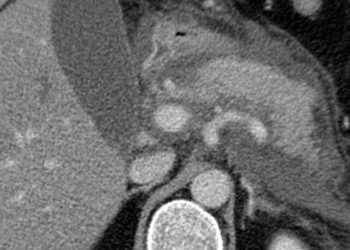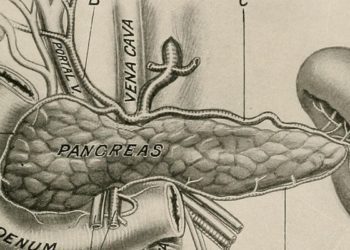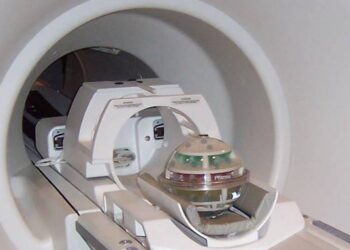2 Minute Medicine Rewind December 1 – December 7, 2014
In this section, we highlight the key high-impact studies, updates, and analyses published in medicine during the past week.
Twelve or 30 Months of Dual Antiplatelet Therapy After Drug-Eluting Stents
Use of dual antiplatelet therapy for up to one year after placement of a drug-eluting stent is standard practice, but the risks and benefits of extending therapy beyond that duration are less well understood. In this multicenter randomized trial, 9961 patients who had received drug-eluting stents and dual antiplatelet therapy for 12 months were assigned to continue aspirin plus either a thienopyridine (e.g. clopidogrel) or placebo for an additional 18 months to study the effects of extended dual antiplatelet therapy on stent thrombosis and a composite of death, myocardial infarction, and stroke. During the study period, participants that continued receiving thienopyridine had a lower rate of both stent thrombosis (0.4% vs 1.4%, HR 0.29, 95%CI 0.17-0.48) and cardiovascular and cerebrovascular events (4.3% vs 5.9%, HR 0.71, 95%CI 0.59-0.85). The incidence of death from any cause during the study period was greater in the thienopyridine group compared to placebo (2.0% vs 1.5%, HR 1.36, 95%CI 1.00-1.85), though this was partially attributed to a difference in the number of patients with cancer in the randomized groups. The number of cancer-related deaths was significantly greater in the thienopyridine arm (31 vs. 14, P=0.02). The study group had higher rates of moderate-severe bleeding compared to placebo (2.5% vs 1.6%, HR 1.61, 95%CI 1.21-2.16) but similar rates of severe or fatal bleeding events.
Segregation and its associated stress response is hypothesized to be a risk factor for cardiovascular disease in minorities, but this relationship has not been well-characterized. In this prospective, multi-site cohort study, researchers followed 1,595 non-Hispanic Black, 2,345 non-Hispanic White, and 1,289 Hispanic adults over 10 years for development of cardiovascular disease (CVD) or events in order to determine associations between individual and neighborhood-level characteristics (including neighborhood-level segregation) and incident CVD. In Blacks, increased neighborhood segregation/clustering relative to surrounding census tracts was associated with increased risk of CVD even after adjusting for demographics, neighborhood poverty and social/physical environment, socioeconomic status, and individual CVD risk factors (HR 1.12, 95%CI 1.02-1.23). Among Hispanics, neighborhood segregation was not associated with CVD (HR 1.01, 95%CI 0.94-1.08), and among Whites, increased segregation was associated with lower risk of CVD, though this was nonsignificant after adjusting for other risk factors (HR 0.92, 95%CI 0.82-1.02).
Surgical Treatment of Moderate Ischemic Mitral Regurgitation
Mitral valve regurgitation as a result of injury and remodeling is common after myocardial infarction, but mitral valve repair in addition to coronary artery bypass graft (CABG) in these cases is controversial. In this multicenter randomized trial, 301 patients with moderate ischemic mitral valve regurgitation and multi-vessel coronary disease were assigned to undergo CABG alone or in addition to mitral valve repair to evaluate the impact on left ventricular remodeling as measured by the left ventricular end-systolic volume index (LVESVI) on transthoracic echocardiogram at 12 months. LVESVI was higher in the combined repair group at 12 months (46.1±22.4ml/m2 in the CABG-only group vs 49.6±31.5ml/m2 in the combined repair group), however once deaths were accounted for, there was no overall benefit (z score 0.5, p=0.61). Mortality at 12 months was 7.3% in the CABG-only group compared to 6.7% in the combined repair group. Longer term follow-up up to 24 months is ongoing, but thus far outcomes between the two groups are largely similar.
Many patients who have a myocardial infarction have no prior symptoms indicating coronary artery disease (CAD), and it is unknown whether screening for CAD among high-risk patients may be beneficial. In this randomized, single-center study, 900 diabetic patients with no known CAD were assigned to CAD screening using coronary CT angiography (CCTA) or standard diabetes management and followed for an average of 4 years to measure the incidence of composite all-cause mortality, non-fatal myocardial infarction, and unstable angina. In the CCTA screening group, 10.7% of participants were found to have severe coronary artery stenosis, and an additional 12% had moderate stenosis, both of which were recommended for further diagnostic workup (angiography or stress test). Despite this, CCTA screening did not significantly reduce occurrence of the primary composite outcome at 4 years (6.2% of the CCTA group compared to 7.6% of controls, HR 0.80, 95%CI 0.49-1.32, p=0.38 in intent-to-treat analysis).
Diabetes in Midlife and Cognitive Change Over 20 Years: A Cohort Study
Diabetes is a known risk factor for dementia, however the association between varying levels of glycemic control and cognitive decline is less clear. In this prospective cohort study, 13,351 black and white middle-aged adults were followed for a median of 19.3 years to study the relationship between HbA1c and cognitive function over time. Among patients with self-reported diabetes, global cognitive Z score declined by 19% more compared to those without self-reported diabetes (average global Z score decline -0.92 vs -0.78 for individuals without diabetes at baseline, difference -0.15, 95%CI -0.22 to -0.08), and this was similar for both black and white participants. Overall, after 20 years, the authors estimated cognitive function in a diabetic to be similar to someone without diabetes who is 4.9 years older. In addition, individuals with HbA1c levels in the pre-diabetic range also had significantly increased cognitive decline compared to those with normal glucose control.
Image: PD
©2014 2 Minute Medicine, Inc. All rights reserved. No works may be reproduced without expressed written consent from 2 Minute Medicine, Inc. No article should be construed as medical advice and is not intended as such by the authors, editors, staff or by 2 Minute Medicine, Inc.









